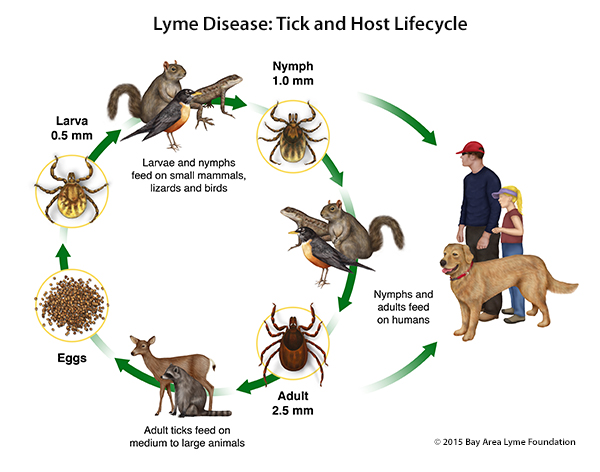Lyme disease is caused by an organism called Borrelia burgdorferi, which is a bacteria. This disease is also known as Lyme borreliosis. Lyme disease is spread in different parts of the world. The infectious bacteria, Borrelia burgdorferi, is transmitted to dogs, humans, and other animals with the help of ticks.
The causative agent, a spiral-shaped bacterium, gets inside certain species of ticks and is transmitted into the host’s bloodstream via tick bite. Blood transports the bacteria to different parts of the body. Bacteria spread their infection and damage specific organs within the body.
Lyme disease is a severe illness; therefore, much effort is made to prevent and control ticks.

The disease starts with non-specific signs that are often difficult to relate to the specific condition. Lyme disease-affected dogs come to the veterinarian with symptoms of generalized pain and anorexia (not eating). The most concurrent Lyme disease symptom is fever and limping. Your furbabies may appear as if they are walking on eggshells. If the disease is not treated promptly, limping may spread from one leg to another. Sometimes, the limping may disappear and reappear after a week or a month.
The non-specific symptoms of Lyme disease in dogs include lethargy, weight loss, anorexia, vomiting, and generalized pain. Lyme disease in dogs rarely affects the kidney; however, the kidney form of the disease is often fatal.
Dogs infected with Lyme disease may take two to five months to show symptoms. By this time, the infection has spread throughout the body.
Dog owners often ask whether Lyme disease can be cured. Yes, it is curable. Lyme disease treatment includes the use of antibiotics for at least 28 days. Your furbaby is tested, and treatment success is indicated by the amount of organism still present within the system. Your furbabies can be reinfection. Dogs bitten by a different tick containing the infection may get Lyme disease again.

The key concept to preventing Lyme disease in dogs is to limit your dog’s exposure to ticks. Flea and Tick prevention are critical to limit environmental exposure. Vaccination against Lyme disease is recommended in areas where Lyme disease is endemic. The Lyme vaccination requires a booster initially, then is a yearly vaccination.